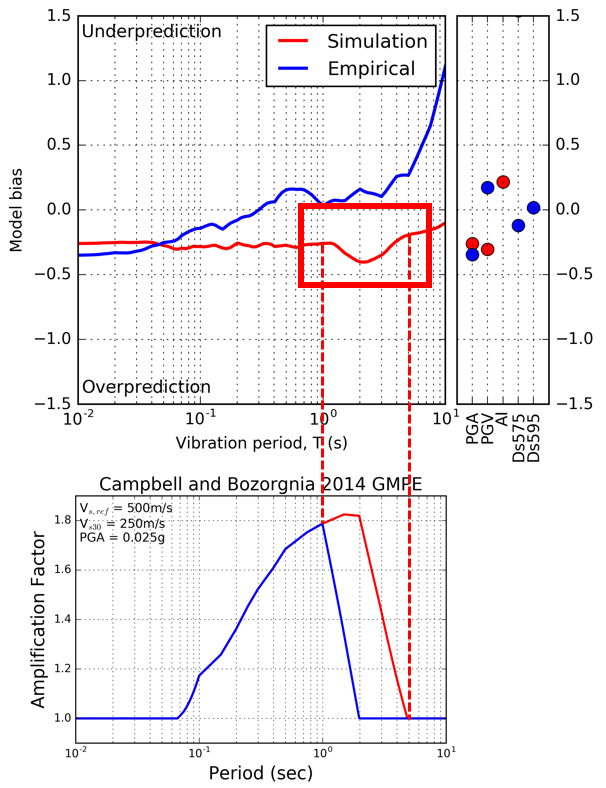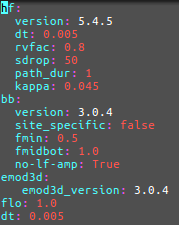This is a modification of gmsim_v16.1 based on the work of Robin Lee in 2017/2018. This version implements a single change:
Removing the long period site amplification (or reducing to a 1-2s taper as opposed to the previous 2-5s taper?)
This change to reduce the long period site amplification was as a result of the CB14 site amplification overamplifying long periods since it double counts for velocity features which are already explicitly modelled in the LF simulations (due to the high resolution 3DVM).
Background
Lee et al. (2016) simulated 146 small magnitude earthquakes (3.5<Mw<5.0) in the Canterbury region with 1854 high-quality observed ground motions recorded across 43 strong motion stations. Using mixed-effects analysis, the results identified that the simulated prediction bias between periods 1.0-5.0s was overpredicted with a "bump" that was shaped similar to the Campbell and Bozorgnia (2014) empirical amplification factor used in the broadband simulations. The concept behind using the empirical amplification factor was to account for site effects which were not explicitly included in the simulations due to the limited representation/resolution of velocity models. However, the 3D velocity model employed in the Canterbury simulations explicitly models many geologic units within the Canterbury sedimentary basin which influence ground motions in the amplified period range. This effectively leads to "double-counting" of these effects which produces this localized overprediction in this period range. The conclusion drawn is that the empirical amplification factor should be minimized (or turned off) for the LF component of the simulation when using a high-resolution high-fidelity velocity model.
Figure 1. Comparison of the shape of the observed prediction bias and the Campbell and Bozorgnia 2014 empirical amplification factor.
Computational Implementation
The first computational change associated with this modification is to add the setting no-lf-amp: True to the bb settings to turn off the site amplification for LF.
The second computational change associated with this modification is to change the "fmin" and "fmidbot" variables to control how the HF is amplified (as the same site amplification function is still applied to HF, even when not applied to LF).
fmin is changed from 0.2 to 0.5 and fmidbot is changed from 0.5 to 1.0. The exact values of this may change depending on finite difference grid spacing and is still to be finalized.
With the binary and yaml workflow, the root_defaults.yaml script should be the following for a 100m grid run:

